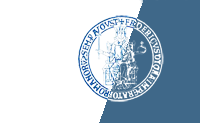Coppola, Valerio (2017) HARNESSING BIOPHYSICAL SIGNALS FOR IN VITRO TISSUE GUIDANCE. [Tesi di dottorato]
Anteprima |
Testo
Coppola_Valerio_29.pdf Download (8MB) | Anteprima |
| Tipologia del documento: | Tesi di dottorato |
|---|---|
| Lingua: | English |
| Titolo: | HARNESSING BIOPHYSICAL SIGNALS FOR IN VITRO TISSUE GUIDANCE |
| Autori: | Autore Email Coppola, Valerio valerio.coppola@unina.it |
| Data: | 10 Aprile 2017 |
| Numero di pagine: | 133 |
| Istituzione: | Università degli Studi di Napoli Federico II |
| Dipartimento: | Ingegneria Chimica, dei Materiali e della Produzione Industriale |
| Dottorato: | Ingegneria dei prodotti e dei processi industriali |
| Ciclo di dottorato: | 29 |
| Coordinatore del Corso di dottorato: | nome email Mensitieri, Giuseppe mensitie@unina.it |
| Tutor: | nome email Ventre, Maurizio [non definito] |
| Data: | 10 Aprile 2017 |
| Numero di pagine: | 133 |
| Parole chiave: | Tissue Engineering; Scaffold-less approach; Tissuegenesis; Tissue Guidance; Cell instructive Materials; |
| Settori scientifico-disciplinari del MIUR: | Area 09 - Ingegneria industriale e dell'informazione > ING-IND/34 - Bioingegneria industriale |
| Depositato il: | 25 Apr 2017 17:37 |
| Ultima modifica: | 08 Mar 2018 13:44 |
| URI: | http://www.fedoa.unina.it/id/eprint/11776 |
| DOI: | 10.6093/UNINA/FEDOA/11776 |
Abstract
This work of thesis aims to investigate the role of biophysical signals expressed by material surfaces on the assembly and structuring of biological tissues in vitro. This because of the observation that, although it is now proven the effectiveness of such signals on a multitude of cellular functions and behaviors, such results have been essentially derived from a single cell context. However, the role of biophysical signals on cell populations is still unclear. This may have important implications in regenerative medicine and tissue engineering, in which exert a tight control on the growing tissue structure is a major issue. In the first part of the thesis an introduction on the importance of cell−material interaction in tissue engineering is presented, focusing on cell−topography crosstalk and mechanics. Furthermore, technologies for the production of synthetic materials with micro- and nano-topography are presented with a description of their pros and cons. Then, we reported the studies on the use of nano-topography to control tissue assembly, which are limited and the possibility to exploit this control to biological applications. This aspect has been investigated in this thesis. We exploited nanotechnologies for the production of tissues with specific function in Chapter 2. Here, patterned PDMS substrates are used as cell culture supports to promote organized tissue assemblies. In more details, our research group demonstrated the powerful ordering effect on cells and cell population of topography. Therefore, we hypothesized that topographic signal could indirectly regulate tissue structure via cell ordering. We, thus, evaluated the effect of different kind of topographic pattern on the assembly of the architecture in the whole tissue thickness. In Chapter 3 we investigated the importance of material stimuli in affecting stem cell behavior in a sort of collective context. Tissue Engineering schemes usually require long term cultures in which cell-cell contacts may over-rule cell-material interactions. Additionally, cells produce their own matrix which can act as a scaffold, with its own biochemical-biophysical characteristics, per se. Yet, material signals can affect tissue morphology and this can indirectly influence cell fate. This stated, we investigated to what extent the signals provided by the endogenous matrix affected stem cell behavior and if a relation between different assemblies of the endogenous tissue and stem cell fate existed. Finally, we brought further level of complexity in the initial condition of culture in order to exert an additional control over tissue assembly in Chapter 4. This because, the data presented so far indicated that during tissue assembly a dynamic reciprocity among the main actors exists. Thus, we examined in depth the dynamic of the multilayering process, depending on substrates geometry further then the features of surfaces. We purposed different kind of devices with different shape in order to provide a tool useful to the optimization of the control over the multilayering mechanism in terms of both reliability and speed.
Downloads
Downloads per month over past year
Actions (login required)
 |
Modifica documento |




